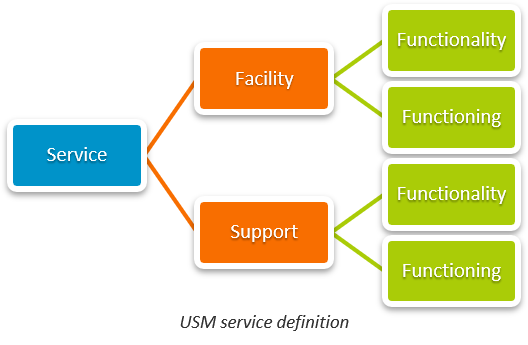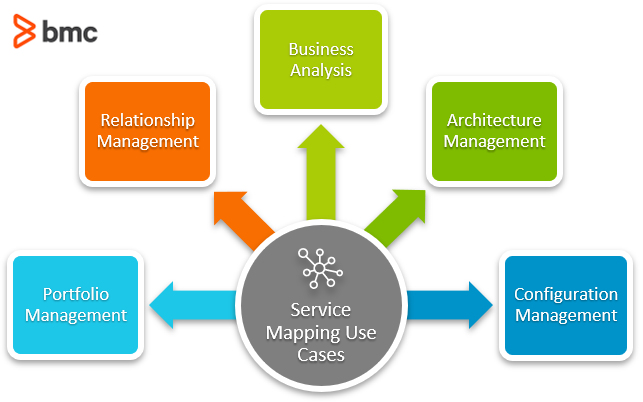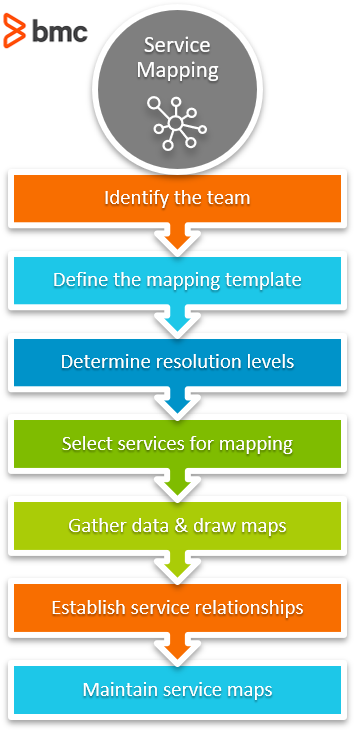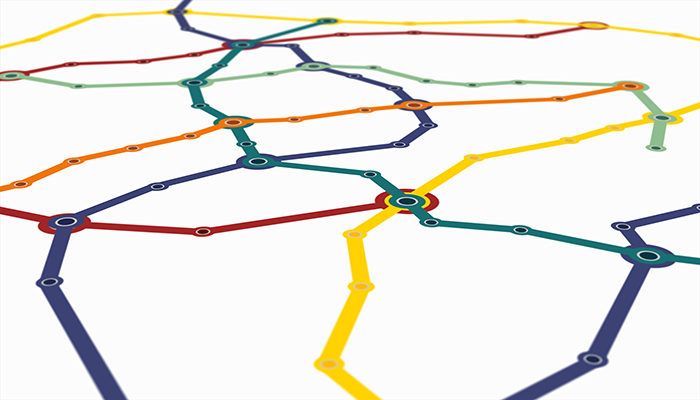Effective service management can never materialize if a service provider lacks a complete grasp of all the elements that comprise the service’s functionality and functioning.
According to USM, every service consists of a facility and the support provided for the use of the service. To gain control over a service, a smart specification of the service is required which provides the basis for understanding by the provider and customer, thus aiding proper definition of service level agreements (SLAs).
Service mapping is one of the techniques that can be applied in specifying the constituents of a service in order to support the practices that manage the service.

What is a service map?
The Microsoft Operations Framework (MOF) defines a service map as a graphical display of a service that illustrates the various components upon which successful delivery of that service relies. These components include:
- Infrastructure
- Applications
- Dependent services
- People
- Settings
The service map serves as a communications tool. It illustrates the “what” of a service (its components and their relationships) as a basis for managing the “how” of a service (how the service is delivered and controlled). Thus, a service map enables the right decisions to be made by the right people in managing that particular service.
The service map does not replace architecture diagrams or other capabilities that can display service components such as configuration management systems or service catalogues. Rather, it serves as a high-level reference tool that demonstrates service relationships and dependencies across the entire spectrum of the service lifecycle.
For this reason, the service map uses more business than technical terms, offering a service-centered view of the environment which facilitates better understanding for stakeholders involved in service management.
(Compare a business service catalog to a technical one.)
Service mapping is therefore the practice of diagramming and documenting all of the components needed to operate each service the organization provides, thus enabling service management. According to Mike Bombard, this process defines hierarchical relationships that can be displayed visually, enabling people to see:
- The relationship between the service and its components
- The relationships to one another
Service mapping can be as simple or as comprehensive as you need. There are a variety of mapping methodologies to help guide your efforts. Some map approaches include:
Service mapping use cases
The usefulness of a service map goes beyond just visualizing service components. In the context of ITIL®4 practices, we can identify several value propositions arising from the use of service maps:

Portfolio management
The portfolio management practice ensures that your organization has the right mix of services to execute its business strategy within funding and resource constraints.
Service mapping can provide capability for this practice as decisions regarding service objectives, investments, and limits can be better made by visualizing service components and dependencies.
Relationship management
Relationship management involves communication with key stakeholders regarding service needs, expectations, and experiences.
By providing the visual aids required to bring all parties to a common plane, a service mapping exercise can be useful in:
- Articulating and understanding customer needs
- Aligning expectations
- Planning value co-creation
- Determining and agreeing on service quality
Business analysis
This practice identifies and justifies solutions to meet the needs of an organization and its customers.
Service mapping can facilitate the visualization of information systems and the definition of technical requirements, both of which assist in evaluating options and communicating recommended solutions to key stakeholders.
Architecture management
Product and service architecture explores interactions between service and models that describe the structure and dynamics such as activities and flow of resources. These actions can be visualized through service maps, supporting the continual optimization of the organization to meet its target architecture.
Configuration Management
The configuration management practice ensures that accurate and reliable information about configuration of services and their components is available when and where it is needed.
Service mapping is a form of configuration modelling where connections and relationships between configuration items can be visualized and documented for purposes of:
- Impact analysis
- Cause and effect analysis
- Risk analysis
- Cost allocation
- Availability planning
These activities feed into other service management practices including change enablement, incident management, problem management, information security management, and service continuity management, among others.
Service Mapping Steps
The MOF framework outlines seven steps for building a service map:

1. Identify the team
Building a service map can be a complex exercise where different components are managed by different teams. It is unlikely that one person can have all the requisite knowledge required.
Therefore, bring together a cross functional team for this purpose, led by the service owner. Build the team to include:
- Different representatives who manage different components that make up the service as well as depend on the service
- A member who has the requisite mapping knowledge, be it on paper or through an automated system
(Explore types of IT teams.)
2. Define the mapping template
This involves setting the ground rules for the mapping exercise including:
- Systems to be used
- Map orientation
- Naming conventions
- Other standards that the team should abide by
The mapping approach also needs to be defined for example hierarchical maps, mind maps, or other preferred structures.
While the team can work with consensus, the service owner would need guidance from the architecture team to ensure that the output of the mapping exercise can fit into the organization’s architecture model.
3. Determine the appropriate level of resolution
The level of detail to be captured by the service map is a decision that requires serious thought and buy-in from those involved:
- Too little detail and the service map is not going to adequately support service management practices.
- Too much detail might introduce unnecessary complexity in management and communication.
The right balance must be discovered and adopted in line with the organization’s needs.
4. Select services for mapping
The services to be selected will be those in the service portfolio that have been prioritized for business needs.
Ideally all services should be mapped, but depending on the organization’s bandwidth for such activities, the service owner may choose to concentrate, for instance, on:
- Only top services that are customer-facing and top revenue generators
- Those destined for major changes in the near term
5. Gather data & draw the service maps
Depending on the organization, the data on underlying components might be found from a myriad of sources. Pulling or putting the information in a central location can be a viable option to support the drawing of the service maps. As you identified earlier, the drawing can be done:
- Manually on paper or a white board
- Through a mapping software like Microsoft Visio
Some prefer to do this process automatically using a software solution that carries out discovery and visualization of service components upon being given the right parameters.
This process is iterative in nature: Refining will be based on available information and feedback from stakeholders and testing exercises.
6. Establish service relationships
Service dependencies are a key component of the service map. Ways to identify dependencies can include:
- From automated discovery by software systems
- Through discussion with stakeholders drawing from their experiences in the development and operation of the services
Capturing this information in a manner that is understood is a critical element in service mapping. Techniques such as dependency matrices and hyperlinks can help document these relationships.
7. Maintain the service maps
Once completed, the service maps should be under the custody of the service owner and communicated to key stakeholders involved in the service lifecycle. Changes to service maps should be tracked to ensure the maps both:
- Remain aligned to the evolving service environment
- Continue to provide value to the organization’s service management practices
Service mapping supports service management
Service mapping is one way to continually improve the services you deliver to your customers. Whenever you need to analyze a particular service, for improvements or innovation, service mapping is one tool that can help.







